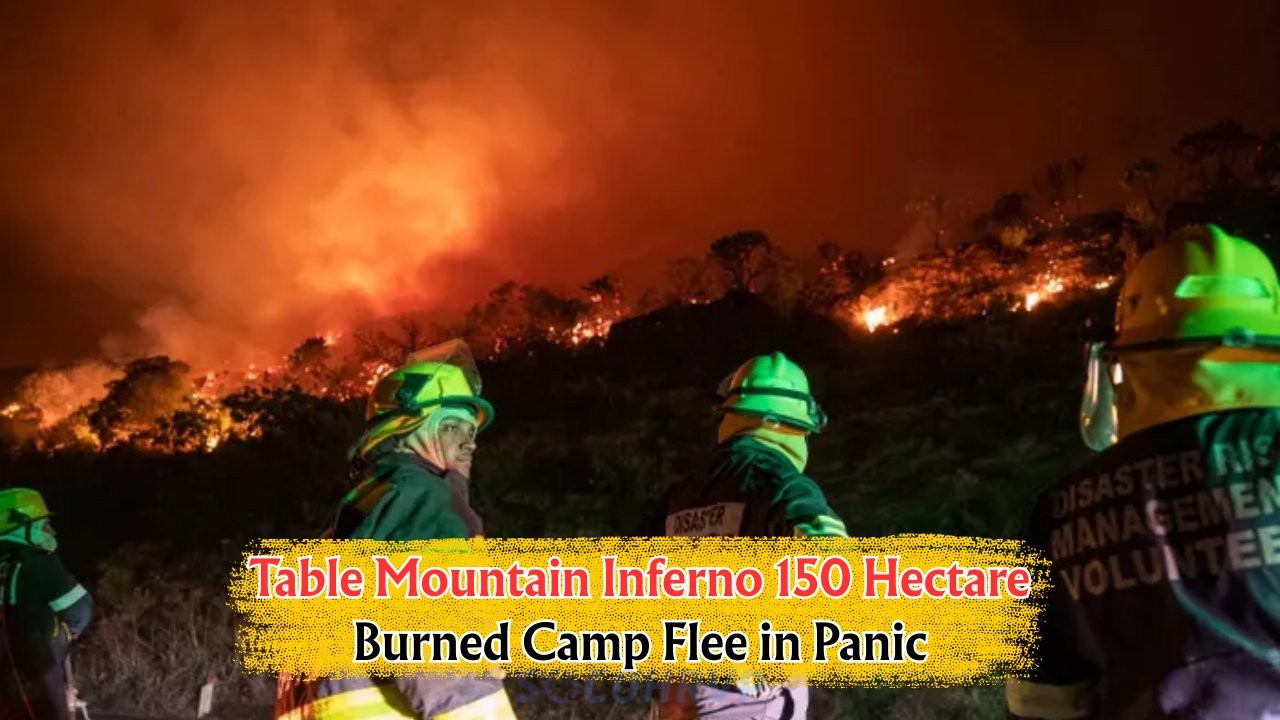July Wildfire Devastates Table Mountain: Amidst the dry winter winds, Table Mountain National Park faced one of its most severe wildfires in recent memory. This July, a blazing inferno consumed approximately 150 hectares, leaving a scar on the iconic natural wonder and prompting urgent evacuation measures for nearby camps. As the flames roared through the fynbos and spread across the steep slopes, emergency services were stretched thin, battling both the fire and the elements. The swift response from firefighters and volunteers was crucial in preventing further disaster, but the incident highlighted the ever-present threat of wildfires in South Africa’s dry seasons.
Impact of the Table Mountain Wildfire: Immediate Consequences
The immediate aftermath of the wildfire was devastating, not only for the landscape but also for the local communities and wildlife. The blaze destroyed natural habitats, threatening endemic species unique to the Cape Floral Region. The smoke and ash filled the air, affecting air quality and posing health risks to residents and tourists alike. The fire also led to road closures and the temporary shutdown of popular hiking trails, impacting the tourism sector which is vital to the local economy.
- Destruction of rare plant species
- Displacement of wildlife
- Air quality deterioration
- Tourism disruptions
- Increased firefighting costs
Emergency Evacuations: A Race Against Time
As the fire rapidly advanced, authorities had to implement emergency evacuation procedures for camps and residential areas at risk. This included alerting residents through various communication channels and coordinating with local disaster management teams to ensure safe and orderly evacuations. Many residents were forced to leave their homes with little notice, relying on the efficiency of the evacuation plans to ensure their safety. The community response was overwhelmingly supportive, with many offering shelter and aid to those displaced.
 South African Bikers Flock to Honda's July Launch of Hornet & Africa Twin, Starting at R198,799
South African Bikers Flock to Honda's July Launch of Hornet & Africa Twin, Starting at R198,799
- Activation of local disaster management teams
- Use of SMS alerts for rapid communication
- Temporary shelters established
- Community volunteer efforts
- Coordination with local authorities
Long-Term Effects on the Ecosystem and Recovery Efforts
In the wake of the wildfire, efforts have shifted towards recovery and rehabilitation of the affected areas. Environmentalists and park officials are working on plans to restore the damaged ecosystems and prevent soil erosion, which could lead to further environmental degradation. There is also a focus on replanting native vegetation and monitoring wildlife populations to ensure a balanced recovery.
Key Recovery Initiatives:
- Replanting native fynbos species
- Soil stabilization projects
- Wildlife population monitoring
- Community involvement in restoration
Community Role in Wildfire Recovery
The community has played a pivotal role in the recovery process, with local organizations and volunteers coming together to support restoration efforts. Educational programs have been launched to raise awareness about wildfire prevention and preparedness, aiming to reduce the risk of future incidents. The collaboration between residents, environmentalists, and authorities is crucial in building resilience against such natural disasters.
- Volunteer-driven cleanup projects
- Educational workshops on fire prevention
- Collaboration with local authorities
- Fundraising for recovery efforts
Firefighting Resources and Strategies
| Resource | Usage | Challenges | Future Improvements |
|---|---|---|---|
| Firefighting teams | Direct fire suppression | Limited manpower | Increase recruitment |
| Helicopters | Water bombing | Weather dependence | Improved technology |
| Community volunteers | Support and logistics | Lack of training | Training programs |
Preventive Measures for Future Wildfires
In light of the recent wildfire, there is a renewed focus on preventive measures to mitigate the risk of future incidents. Strategies include improved monitoring systems, community education, and better land management practices. Authorities are exploring advanced technologies like satellite imagery and drones to monitor fire-prone areas more effectively.
Proactive Strategies:
- Advanced fire detection systems
- Regular community fire drills
- Controlled burns to manage vegetation
- Improved land management
Technological Innovations in Firefighting
Technology is playing an increasingly important role in combating wildfires. Innovations such as drones equipped with thermal imaging cameras and AI-driven data analysis are providing firefighters with more information and better tools to tackle fires effectively. These technologies are being integrated into existing firefighting strategies to enhance response times and efficiency.
| Technology | Application | Benefits | Challenges |
|---|---|---|---|
| Drones | Fire monitoring | Real-time data | Regulatory issues |
| AI Analysis | Predictive modeling | Improved planning | Data accuracy |
| Satellite Imagery | Area surveillance | Wide coverage | Costly implementation |
Frequently Asked Questions
What caused the Table Mountain wildfire?
The exact cause is still under investigation, but it is suspected to be due to dry conditions and human activity.
How can residents prepare for wildfires?
Residents should have an evacuation plan, stay informed via local alerts, and maintain defensible space around their properties.
What is the role of volunteers in recovery?
Volunteers assist in cleanup efforts, support displaced residents, and participate in educational initiatives.
How is technology improving firefighting?
Technology like drones and AI is enhancing fire detection, monitoring, and predictive capabilities.







